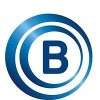Filter interviews by
Salzer Electronics Junior Mechanical Design Engineer Interview Questions and Answers
Salzer Electronics Junior Mechanical Design Engineer Interview Experiences
1 interview found
I applied via Walk-in and was interviewed in Oct 2020. There was 1 interview round.
Interview Questionnaire
3 Questions
- Q1. Introduce yourself
- Q2. Tool design and knowledge
- Q3. Technical questions in Strength of materials and thermodynamics
Interview Preparation Tips
Top trending discussions






Interview questions from similar companies

I applied via Walk-in and was interviewed in Sep 2021. There were 3 interview rounds.
Interview Questionnaire
1 Question
- Q1. Projects related
Interview Preparation Tips

Electrical Engineer Interview Questions & Answers
Amber Enterprises Indiaposted on 1 Sep 2022
I applied via LinkedIn and was interviewed in Aug 2022. There were 2 interview rounds.

(2 Questions)
- Q1. Related electrical question
- Q2. Like wire connection
Interview Preparation Tips

I applied via Naukri.com and was interviewed before Jan 2023. There were 4 interview rounds.
(2 Questions)
- Q1. Basic questions
- Q2. Previous employer related
(2 Questions)
- Q1. Technical questions
- Q2. Machine related
Over all plant related
(1 Question)
- Q1. Man power handle and previous employer related
Interview Preparation Tips

I applied via Naukri.com and was interviewed in Dec 2022. There were 3 interview rounds.

(3 Questions)
- Q1. What is 3-phase 4 wair system
- Ans.
A 3-phase 4 wire system is a type of electrical system commonly used for power distribution.
Consists of three conductors carrying alternating current at the same frequency, with a fourth neutral conductor
Provides a more balanced and efficient power distribution compared to single-phase systems
Commonly used in industrial and commercial applications for higher power requirements
Example: Used in large factories, office bu...
- Q2. Which of the following is a characteristic of digital signal
- Ans.
A characteristic of digital signal is that it is discrete and represented by binary numbers.
Digital signals are represented by discrete values
Digital signals are represented by binary numbers (0s and 1s)
Digital signals are less susceptible to noise compared to analog signals
- Q3. An electrical signal can be represented in either Thevenin form or Norton From. However, Norton representation is preferred when
- Ans.
Norton representation is preferred when the load impedance is known and fixed.
Norton representation is preferred when the load impedance is known and fixed, as it simplifies calculations.
Thevenin representation is preferred when the load impedance is unknown or variable.
Norton equivalent circuits are easier to analyze in terms of current flow and power calculations.
Thevenin equivalent circuits are easier to analyze in ...
Diploma in electrical engineering
Interview Preparation Tips


(3 Questions)
- Q1. Electrical engineering
- Q2. Electrical motor
- Q3. Electrical equipment
(2 Questions)
- Q1. Electrical maintenance
- Q2. Electrical motor


(2 Questions)
- Q1. Questions about high voltage and high current components.
- Q2. Questions on different topologies used in power supplies
Interview Preparation Tips

Electrical Engineer Interview Questions & Answers
CG Power and Industrial Solutionsposted on 14 Jun 2025
I appeared for an interview before Jun 2024, where I was asked the following questions.
- Q1. What is a locomotive?
- Ans.
A locomotive is a rail transport vehicle that provides the motive power for trains.
Locomotives can be powered by diesel engines, electric motors, or steam engines.
They are designed to pull or push train cars along railway tracks.
Examples include the GE ES44AC diesel locomotive and the Siemens ACS-64 electric locomotive.
Locomotives are equipped with various controls for speed, braking, and safety.
They often have a disti...
- Q2. What is an auxiliary converter?
- Ans.
An auxiliary converter is a device that converts electrical energy for auxiliary systems in larger power systems.
Used to supply power to auxiliary equipment like control systems and lighting.
Commonly found in power plants, ships, and industrial applications.
Examples include DC-DC converters and AC-DC converters.
Enhances system reliability by providing backup power.
- Q3. What are the differences between Direct Current (DC) and Alternating Current (AC)?
- Ans.
DC flows in one direction, while AC changes direction periodically, affecting their applications and characteristics.
DC (Direct Current) flows steadily in one direction, e.g., batteries.
AC (Alternating Current) changes direction periodically, e.g., household power supply.
DC is used in low-voltage applications like electronics and batteries.
AC is used for high-voltage power transmission and in homes.
DC has a constant vo...
- Q4. What is a trainer, and what are the different types of trainers?
- Ans.
A trainer is a professional who imparts knowledge and skills in a specific field, using various methods and tools.
Types of trainers include: Technical Trainers (e.g., software training), Corporate Trainers (e.g., leadership skills), and Fitness Trainers (e.g., personal trainers).
Technical Trainers focus on specific skills or technologies, such as programming languages or software applications.
Corporate Trainers develop...
- Q5. What is control wiring?
- Ans.
Control wiring refers to the electrical connections that manage and control machinery and equipment operations.
Used in automation systems to connect sensors, switches, and controllers.
Examples include wiring for relays, contactors, and programmable logic controllers (PLCs).
Typically involves low voltage circuits for safety and efficiency.
Control wiring can be found in HVAC systems, industrial machinery, and home automa...
- Q6. What is an auxiliary converter, and what does it mean?
- Ans.
An auxiliary converter is a device that converts electrical energy for auxiliary systems in larger electrical systems.
Used in power systems to supply power to non-primary loads.
Examples include DC-DC converters for battery charging.
Common in renewable energy systems to manage energy flow.
Can provide power for control systems, lighting, and HVAC.
- Q7. What is a transformer?
- Ans.
A transformer is an electrical device that transfers electrical energy between circuits through electromagnetic induction.
Transforms voltage levels: steps up or steps down voltage.
Consists of primary and secondary coils wound around a magnetic core.
Used in power distribution systems to manage voltage levels.
Example: A step-down transformer reduces 220V to 12V for household use.
Essential for efficient long-distance elec...
- Q8. What are high tension (HT) and low tension (LT) panels?
- Ans.
HT panels handle high voltage, while LT panels manage low voltage in electrical distribution systems.
HT panels operate at voltages above 1 kV, typically used in substations.
LT panels operate at voltages below 1 kV, commonly used in residential and commercial buildings.
HT panels are used for transmission and distribution of electricity over long distances.
LT panels are used for local distribution and powering appliances...
- Q9. What are the types of motor control panels?
- Ans.
Motor control panels manage and control electric motors, ensuring efficient operation and protection.
Direct-On-Line (DOL) Starter: Simple and cost-effective for small motors.
Star-Delta Starter: Reduces starting current for larger motors.
Variable Frequency Drive (VFD): Controls motor speed and torque by varying frequency.
Soft Starter: Gradually increases motor voltage to reduce mechanical stress.
Programmable Logic Contr...
- Q10. What are the types of power control panels?
- Ans.
Power control panels manage and distribute electrical power in various applications, ensuring safety and efficiency.
Motor Control Centers (MCC): Used for controlling motors in industrial applications.
Distribution Boards: Distribute electrical power to various circuits.
Automatic Transfer Switch Panels: Switch between power sources automatically during outages.
Control Panels for Generators: Manage generator operations an...
Interview Preparation Tips

I appeared for an interview in May 2024.
(2 Questions)
- Q1. Types ho single phase motor
- Q2. Types of transfermar

I applied via Naukri.com and was interviewed before Oct 2023. There was 1 interview round.
(5 Questions)
- Q1. Conducting Material varieties
- Q2. Difference between copper busbar and aluminum bar
- Ans.
Copper busbars have higher conductivity and better resistance to corrosion compared to aluminum bars.
Copper busbars have higher conductivity than aluminum bars.
Copper busbars have better resistance to corrosion compared to aluminum bars.
Aluminum bars are lighter and cheaper than copper busbars.
Aluminum bars are more prone to oxidation compared to copper busbars.
- Q3. Methods of Heat transfer
- Ans.
Heat transfer methods include conduction, convection, and radiation.
Conduction: Heat transfer through direct contact between materials (e.g. touching a hot pan)
Convection: Heat transfer through the movement of fluids (e.g. boiling water)
Radiation: Heat transfer through electromagnetic waves (e.g. feeling the warmth of the sun)
- Q4. Tolerance stack
- Q5. Types of Material and Various plastic
- Ans.
Various types of materials and plastics used in engineering applications.
Common types of materials include metals, polymers, ceramics, and composites
Plastics are a type of polymer that can be categorized as thermoplastics or thermosets
Examples of plastics include polyethylene, polystyrene, PVC, and ABS
Materials selection is crucial in engineering design to ensure desired properties and performance
Salzer Electronics Interview FAQs
Tell us how to improve this page.
Salzer Electronics Interviews By Designations
- Salzer Electronics Assistant Engineer Interview Questions
- Salzer Electronics Senior Purchase Officer Interview Questions
- Salzer Electronics Design and Product Development Engineer Interview Questions
- Salzer Electronics Quality Inspector Interview Questions
- Salzer Electronics Intern Interview Questions
- Salzer Electronics Junior Mechanical Design Engineer Interview Questions
Interview Questions for Popular Designations
- Junior Engineer Interview Questions
- Electrical Engineer Interview Questions
- Mechanical Engineer Interview Questions
- Senior Design Engineer Interview Questions
- Electrical Design Engineer Interview Questions
- Junior Design Engineer Interview Questions
- Product Design Engineer Interview Questions
- Senior Mechanical Design Engineer Interview Questions
- Show more
Interview Questions from Similar Companies
Salzer Electronics Junior Mechanical Design Engineer Reviews and Ratings
based on 1 review
Rating in categories
|
Quality Engineer
28
salaries
| ₹1.4 L/yr - ₹3.2 L/yr |
|
Design Engineer
24
salaries
| ₹1.4 L/yr - ₹3.8 L/yr |
|
R&D Engineer
19
salaries
| ₹1.8 L/yr - ₹3.6 L/yr |
|
Assistant Engineer
16
salaries
| ₹2.2 L/yr - ₹5.7 L/yr |
|
Assistant Manager
12
salaries
| ₹5 L/yr - ₹10.1 L/yr |

Havells

CG Power and Industrial Solutions

KEI Industries

RR kabel
- Home >
- Interviews >
- Salzer Electronics Interview Questions












